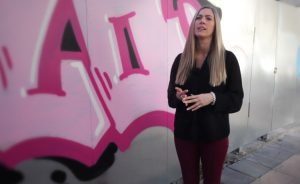The 3H´s
IE Business School leadership professor Margarita Mayo shares insights on how to become an authentic leader.
Those about to step into the role of leader are often faced with a challenge. What kind of leader to be?
Of course it’s important to learn from others, but it’s also vital to develop your own unique style based on your strengths and weaknesses: your own authentic leadership style.
IE Business School leadership professor Margarita Mayo was recently included in the prestigious 2017 Thinkers50 Radar, which showcases truly independent-minded thinkers from around the world, all driven by curiosity and innovation.
In her forthcoming book, Professor Mayo explores the shifting nature of authenticity in leadership roles. In this video, she shares three key, research-based insights into how to become an authentic leader: heart, habit and habitat.
She suggests leaders begin their search for authenticity by looking inside themselves. Find your passion, so you can share it with your team and inspire them, winning their hearts over.
Then, build healthy leadership habits by seeking out honest and critical feedback to develop a routine that helps you to grow, adapt and progress.
As an authentic leader, it’s also essential to enrich your organization, your habitat, by building an space that keeps its focus on the accomplishments of your team and helps them shine.
Listen to what Professor Mayo has to say about how to become an authentic leader – in essence, she’s telling you to follow your heart.
Tango
IE Business School leadership professor Margarita Mayo uses tango dancing as a metaphor to speak about leadership.
In this video IE Business School leadership professor Margarita Mayo uses tango dancing as a metaphor to speak about leadership. She draws an interesting comparison between the two from the perspective of the dancer’s role in tango.
The origin of the word tango has always intrigued me. There are many theories about its roots. One is that it is actually an onomatopoeic term because the word tango sounds like the drums used in early forms of the dance. Opposers of this theory say that the drum was never a typical tango instrument. The first tango instruments were the violin, guitar, flute, and later a concertina-style instrument called the bandoneon.
Another theory is that the word tango originated from the Italian word tangere, which means ‘to touch’. However, considering that early tango did not feature the close embrace it is known for today, the word tangere is hardly likely to be the origin.
Some say that the most plausible theory is that which claims the word tango has African roots. In several African languages, tango means indoors – the closed space which was used for dancing… Well, who knows. The fact is that tango has become a dance form that is admired the world over.
Maybe we can’t be certain about the origin of the word tango, but one thing is for sure and that is that the world needs meaningful leadership. Listen to what Prof. Mayo has to say about both. You might end up wanting to dance with her just like Prof. Burak Konyuncu from Rouen Business School did.

